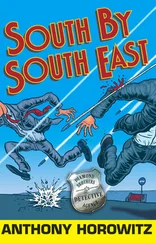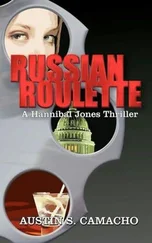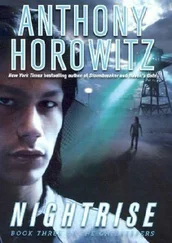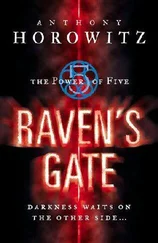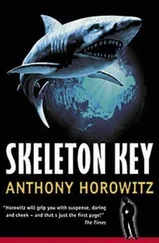During my training, Oliver d’Arc had told me the story of an Israeli agent working under cover in Dubai. He had got into a lift with seven people. One of them had been his best friend. The others were an elderly French woman who was staying at the hotel, a blind man, a young honeymooning couple, a woman in a burka and a chambermaid. The lift doors had closed and that was the moment when he discovered that all of them – including his friend – were working for al-Qaeda. When the lift doors opened again, he was dead. I took the stairs to my floor and waited for my case to be brought up.
The room was small, clean, functional. I sat on the bed until the case came, tipped the porter and unpacked. Before I left Malagosto, Gordon Ross had supplied me with a couple of the items which he had shown us during our lessons and which he hoped would help me with my work. The first of these was a travelling alarm clock. I took it out of my suitcase and flicked a switch concealed in the back. It scanned the entire room, searching for electromagnetic signals… in other words, bugs. There weren’t any. The room was clean. Next, I took out a small tape recorder, which I stuck to the back of the fridge. When I left the room, it would record anyone who came in.
At ten o’clock exactly, there were three knocks on the door. I went over and opened it to find an elderly, grey-haired man, smartly dressed in a suit with a coat hanging open. He had a neat beard, also grey. If you had met him in the street you might have thought he was a professor or perhaps an official in a foreign embassy.
“Mr Gregorovich?” he asked.
It was all so strange. I was still getting used to being called “Mr”. I nodded. “You’re Marcus?”
He didn’t answer that. “This is for you,” he said, handing me a parcel, wrapped in brown paper. “I’ll call back tomorrow night at the same time. By then, I hope, you’ll have everything planned out. OK?”
“Right,” I said.
“Nice meeting you.”
He left. I took the parcel over to the bed and opened it. The size and weight had already told me what I was going to find inside and, sure enough, there it was – a Smith & Wesson 4546, an ugly but efficient semi-automatic pistol that looked old and well used. The serial number had been filed off, making it impossible to trace. I checked the clip. It had been delivered with six bullets. So there it was. I had the target. I had the weapon. And I had just four days to make the kill.
The following morning, I stood outside the offices of Clarke Davenport, which were located on the nineteenth floor of a skyscraper in Midtown Manhattan, quite close to the huge, white marble structure of St Patrick’s Cathedral. This was quite useful to me. A church is one of the few places in a city where it is possible to linger without looking out of place. From the steps, I was able to examine the building opposite at leisure, watching the people streaming in and out of the three revolving doors, wondering if I might catch sight of Kathryn Davis among them. I was glad she did not appear. I was not sure if I was ready for this yet. Part of me was worried that I never would be.
The secret of a successful kill is to know your target. That was what I had been taught. You have to learn their movements, their daily routine, the restaurants where they eat, the friends they meet, their tastes, their weaknesses, their secrets. The more you know, the easier it will be to find a time and an opportunity and the less chance there will be of making a mistake. You might not think I would learn a great deal from staring at a building for five hours, but at the end of that time I felt myself connected to it. I had taken note of the CCTV cameras. I had counted how many policemen had walked past on patrol. I had seen the maintenance men go in and had noted which company they worked for.
At half past five that afternoon, just as the rush to get home had begun and when everyone would be at their most tired and impatient, I presented myself at the main reception desk, wearing the overalls of an engineer from Bedford (Long Island) Electricity. I had visited the company earlier that afternoon – it was actually in Brooklyn – pretending that I was looking for a job and it had been simple enough to steal a uniform and an assortment of documents. I had then returned to my hotel, where I had manufactured an ID tag using a square cut out from a company newsletter and a picture of myself, which I had taken in a photo booth. The whole thing was contained in a plastic holder, which I had deliberately scratched and made dirty so that it would be difficult to see. Maintaining a false identity is mainly about mental attitude. You simply have to believe you are who you say you are. You can show someone a travel card and they will accept it as police ID if you do it with enough authority. Another lesson from Malagosto.
The receptionist was a very plump woman with her eye already fixed on the oversized clock that was built into the wall opposite her. There was a security man, in uniform, standing nearby.
“BLI Electrics,” I said. I spoke with a New York accent, which had taken me many hours, working with tapes, to acquire. “We’ve got a heating unit down…” I pretended to consult my worksheet. “Clarke Davenport.”
“I don’t think I’ve seen you before,” the woman said.
“That’s right, ma’am.” I showed her my pass, at the same time holding her eye so she wouldn’t look at it too closely. “It’s my first week in the job. And it’s my first job,” I added proudly. “I only graduated this summer.”
She smiled at me. I guessed that she had children of her own. “It’s the nineteenth floor,” she said.
The security man even called the lift for me.
I took it as far as the eighteenth floor, then got out and made my way to the stairwell. It was still too early and I had a feeling lawyers wouldn’t keep normal office hours. I waited an hour, listening to the sounds in the building… people saying goodbye to each other, the chimes of the lifts as the doors opened and shut. It was dark by now and with a bit of luck the building would be empty apart from the cleaners. I walked up one floor and found myself in the reception area of Clarke Davenport with two silver letters – C and D – on the wall. There was no one there. The lights were burning low. A pair of frosted glass doors opened onto a long corridor, a length of plush blue carpet leading clients past conference rooms with leather chairs and tables polished like mirrors. My feet made no sound as I made my way through an open-plan area filled with desks, computers and photocopying machines, but as I reached the far end I saw a movement out of the corner of my eye and suddenly I was being challenged.
“Can I help you?”
I hadn’t seen the young, tired-looking woman who had been bending down beside a filing cabinet. She was wearing a coat and scarf, about to leave, but she hadn’t gone yet and I had allowed her to see me. My heart sank at such carelessness. I could almost hear Sefton Nye shouting at me.
“The water cooler,” I muttered, pointing down the corridor.
“Oh. Sure.” She had found the file she was looking for and straightened up.
I continued walking. With a bit of luck, she wouldn’t even remember we’d met.
All the offices at Clarke Davenport had the names of their occupants printed next to the doors. That was helpful. Kathryn Davis was at the far end. She must have been important to the company as she had been given a corner office with views over Fifth Avenue and the cathedral. The door was locked but that was no longer a problem for me. Using a pick and a tension wrench I had it open in five seconds and let myself into a typical lawyer’s office with an antique desk, two chairs facing it, a shelf full of books, a leather sofa with a coffee table and various pictures of mountain scenery. I turned on her desk lamp. It might have been safer to use a torch but I didn’t intend to stay here long and having proper light would make everything easier.
Читать дальше





